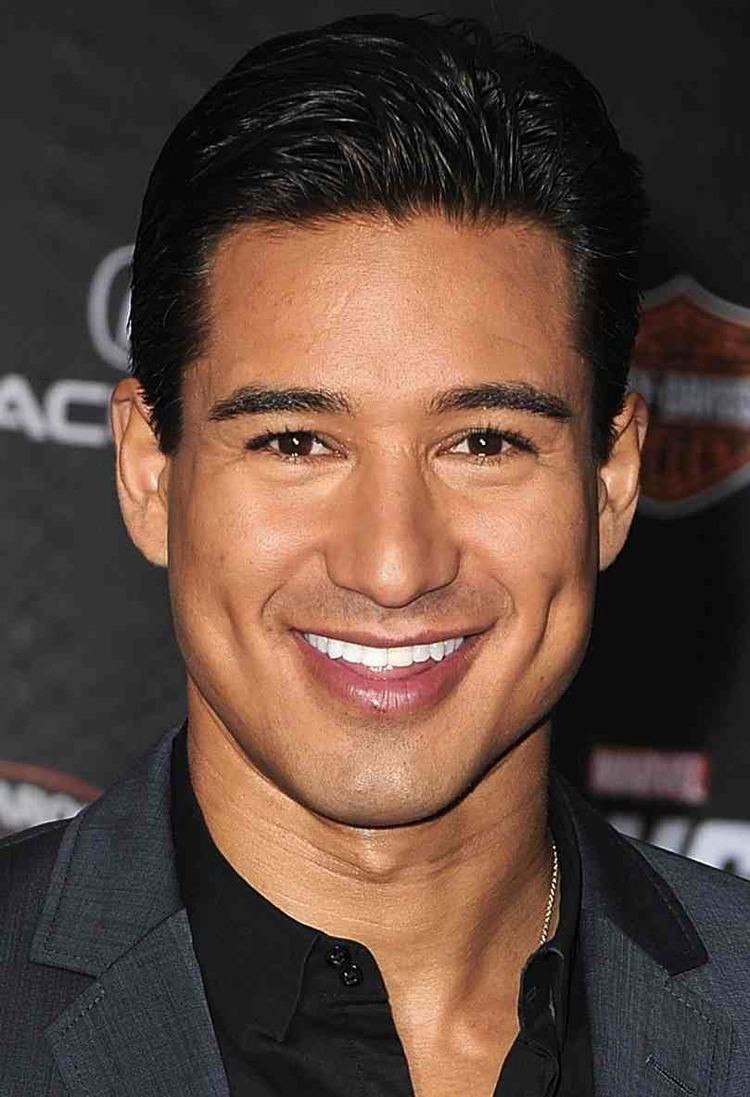Mario Lopez's Journey To Overcome Addiction: A Story Of Hope And Recovery
Mario Lopez drugs is a term used to describe the illegal use of drugs by the American television personality and actor. In the early 2000s, Lopez admitted to struggling with addiction to prescription painkillers and cocaine.
The misuse of drugs has significant implications for individuals and society as a whole. Substance abuse can lead to health problems, relationship difficulties, and legal consequences. In recent years, there has been growing awareness of the need for effective drug prevention and treatment programs.
This article will explore the history of Mario Lopez drugs, discuss the consequences of drug abuse, and provide information on resources for those seeking help.
Read also:Taylor Swift Nude Images The Truth Behind The Controversy And Why It Matters
Mario Lopez Drugs
The term "Mario Lopez drugs" refers to the illegal use of drugs by the American television personality and actor. This topic encompasses various essential aspects, including:
- Addiction
- Substance abuse
- Recovery
- Prevention
- Treatment
- Health consequences
- Legal consequences
- Social consequences
- Celebrity culture
- Media influence
These aspects are interconnected and complex, and they highlight the multifaceted nature of drug abuse and addiction. Understanding these aspects is crucial for developing effective prevention and treatment strategies, as well as for reducing the stigma associated with substance use disorders.
| Name | Mario Lopez |
|---|---|
| Occupation | Actor, television personality |
| Date of birth | October 10, 1973 |
| Place of birth | Chula Vista, California, U.S. |
| Years active | 1984present |
| Known for | Saved by the Bell, Dancing with the Stars |
Addiction
Addiction, a central aspect of "Mario Lopez drugs", is a complex disease characterized by compulsive drug seeking and use, despite negative consequences. It involves neurochemical, behavioral, and cognitive changes that make quitting extremely difficult.
- Compulsion: Lopez has described his intense cravings and inability to control his drug use, even when it caused harm to his health, relationships, and career.
- Tolerance: Over time, Lopez's body adapted to the presence of drugs, requiring him to take higher doses to achieve the same effect.
- Withdrawal: When Lopez attempted to quit using drugs, he experienced severe physical and psychological symptoms, such as anxiety, insomnia, and muscle aches.
- Relapse: Despite periods of sobriety, Lopez has experienced setbacks and returned to drug use, highlighting the chronic and relapsing nature of addiction.
These facets of addiction underscore the powerful grip it can have on individuals, making it crucial to understand and address the underlying causes and consequences of substance use disorders.
Substance abuse
Substance abuse, a core component of "Mario Lopez drugs", refers to the misuse of legal or illegal drugs, often leading to addiction. It encompasses patterns of drug use that can cause harm to an individual's physical, mental, emotional, and social well-being.
In Lopez's case, substance abuse manifested as excessive and compulsive use of prescription painkillers and cocaine. His addiction led to a downward spiral, negatively impacting his health, relationships, and career. Lopez's struggles highlight the insidious nature of substance abuse and its devastating consequences.
Read also:Mira Shape Nude The Ultimate Guide To This Trendsetting Phenomenon
Understanding the relationship between substance abuse and "Mario Lopez drugs" is crucial for several reasons. Firstly, it underscores the complexity of addiction and the need for comprehensive treatment approaches that address both the underlying causes and the physical and psychological effects of drug abuse. Secondly, it raises awareness about the prevalence of substance use disorders and the importance of seeking help. Finally, it highlights the role of prevention and education in reducing the incidence of substance abuse and its associated harms.
Recovery
Recovery, an integral component of "mario lopez drugs", entails the process of overcoming addiction and regaining control over one's life. It involves various stages, including recognizing the problem, seeking help, detoxifying, and engaging in therapy and support groups.
In Lopez's case, recovery began when he acknowledged his addiction and sought professional help. He underwent treatment, therapy, and adopted a sober lifestyle. Through this process, Lopez rediscovered his health, rebuilt relationships, and reclaimed his career. His journey exemplifies the transformative power of recovery and its profound impact on individuals struggling with substance abuse.
Recovery is crucial for individuals with "mario lopez drugs" because it addresses the underlying causes of addiction, reduces the risk of relapse, and promotes overall well-being. It empowers individuals to break free from the cycle of addiction and live fulfilling and productive lives.
Understanding the connection between recovery and "mario lopez drugs" is essential for several reasons. Firstly, it underscores the importance of seeking help for addiction and highlights the availability of effective recovery programs. Secondly, it raises awareness about the challenges and triumphs associated with recovery, fostering empathy and support for individuals on this journey. Finally, it emphasizes the need for ongoing support and resources to sustain recovery and prevent relapse.
Prevention
Prevention plays a crucial role in combating "mario lopez drugs" by addressing the root causes of substance abuse and reducing the risk of individuals initiating drug use. It involves various strategies aimed at educating communities, strengthening protective factors, and promoting healthy choices.
Prevention is a critical component of "mario lopez drugs" because it can help prevent the onset of addiction and its associated harms. By providing accurate information about drugs, their effects, and the risks of addiction, prevention programs can empower individuals to make informed decisions and resist peer pressure to use drugs. Additionally, prevention initiatives that focus on building resilience, coping skills, and social support networks can reduce the likelihood of individuals turning to drugs as a means of self-medication or escape.
Real-life examples of prevention within "mario lopez drugs" include school-based programs that teach students about the dangers of drug use, community initiatives that provide support and resources to families and youth at risk, and media campaigns that raise awareness about the consequences of substance abuse. These programs have been shown to be effective in reducing drug use and its associated problems.
Understanding the link between prevention and "mario lopez drugs" has practical applications in developing comprehensive strategies to address this issue. By investing in prevention programs and initiatives, communities can create protective environments that make it less likely for individuals to start using drugs. This can lead to a reduction in addiction rates, its associated health and social costs, and the overall burden on society.
Treatment
Treatment is a crucial aspect of "mario lopez drugs" as it encompasses the range of interventions and therapies aimed at addressing substance abuse and addiction. It involves medical, psychological, and social approaches to help individuals overcome their dependence on drugs and regain control over their lives.
- Detoxification:
The first step in treatment often involves detoxification, which is the process of safely managing withdrawal symptoms and ridding the body of drugs.
- Therapy:
Therapy plays a central role in addiction treatment, providing a safe and supportive environment for individuals to explore the underlying causes of their substance abuse, develop coping mechanisms, and build resilience.
- Medication:
In some cases, medication may be used as part of treatment to manage withdrawal symptoms, reduce cravings, and address co-occurring mental health conditions.
- Support Groups:
Support groups, such as 12-step programs or peer support groups, provide individuals with a sense of community, shared experiences, and ongoing encouragement during recovery.
Treatment for "mario lopez drugs" is an ongoing process that requires commitment, support, and a tailored approach to meet the unique needs of each individual. It aims to help individuals achieve lasting recovery, rebuild their lives, and regain their health and well-being.
Health consequences
"Health consequences" and "mario lopez drugs" are inextricably linked, as substance abuse can have a devastating impact on an individual's physical and mental health. The chronic use of drugs can disrupt the body's normal functioning, leading to a wide range of health problems.
For instance, excessive alcohol consumption can harm the liver, heart, and brain, while cocaine use can increase the risk of heart attacks, strokes, and respiratory problems. Similarly, the use of opioids can lead to addiction, overdose, and respiratory depression. These health consequences can be severe and even life-threatening.
Understanding the relationship between "health consequences" and "mario lopez drugs" is crucial for several reasons. Firstly, it highlights the importance of prevention and early intervention to minimize the risk of substance abuse and its associated health problems. Secondly, it emphasizes the need for effective treatment programs that address both the substance use disorder and its physical and mental health consequences. Finally, it underscores the importance of ongoing support and recovery services to help individuals maintain sobriety and rebuild their health.
Legal consequences
"Legal consequences" and "mario lopez drugs" are closely intertwined, as substance abuse can lead to a variety of legal issues and penalties. Understanding these consequences is crucial for preventing substance abuse and promoting recovery.
- Possession of drugs:
The possession of illegal drugs, such as cocaine or heroin, is a criminal offense in most jurisdictions. Penalties can range from fines to imprisonment, depending on the type and quantity of drugs involved.
- Distribution of drugs:
Selling or distributing illegal drugs is a serious crime that can result in severe penalties, including lengthy prison sentences.
- Driving under the influence (DUI):
Driving while intoxicated by drugs or alcohol is illegal and can lead to fines, license suspension, or even jail time.
- Child endangerment:
Parents who use drugs and put their children at risk may face child endangerment charges, which can result in the loss of custody or even criminal prosecution.
These legal consequences underscore the importance of avoiding drug use and seeking help if struggling with substance abuse. Understanding the legal ramifications can serve as a deterrent and motivate individuals to make healthier choices.
Social consequences
"Social consequences" and "mario lopez drugs" are tightly intertwined, as substance abuse can lead to a range of negative social outcomes. Understanding these consequences is critical for preventing substance abuse and promoting recovery.
Substance abuse can damage relationships with family and friends, leading to isolation and loneliness. It can also disrupt work or school performance, resulting in job loss or academic failure. Additionally, substance abuse can lead to financial problems, housing instability, and homelessness. These social consequences can have a profound impact on individuals' lives, making it harder to recover and maintain sobriety.
Real-life examples of "social consequences" within "mario lopez drugs" include:
- Celebrities losing their jobs or endorsements due to drug use.
- Individuals facing legal consequences and losing custody of their children.
- Families and communities being affected by drug-related violence or property crime.
Understanding the connection between "social consequences" and "mario lopez drugs" has practical applications in developing effective prevention and intervention strategies. By addressing the social factors that contribute to substance abuse, such as poverty, trauma, and lack of social support, we can create more resilient communities and reduce the risk of drug use and its associated harms.
Celebrity culture
Celebrity culture exerts a significant influence on individuals' perceptions and behaviors related to substance use. The portrayal of drug use in the media can shape public attitudes, normalize substance abuse, and influence individuals' decisions about drug use.
In the case of "mario lopez drugs," celebrity culture played a role in perpetuating the image of drug use as glamorous and acceptable. Lopez's public struggles with addiction brought attention to the issue and highlighted the challenges faced by individuals battling substance abuse.
Real-life examples further illustrate the connection between "celebrity culture" and "mario lopez drugs." Many celebrities have openly discussed their experiences with addiction, including Demi Lovato, Eminem, and Russell Brand. These disclosures have helped reduce the stigma associated with substance abuse and encouraged others to seek help.
Understanding the relationship between "celebrity culture" and "mario lopez drugs" has several practical applications. It underscores the importance of responsible media portrayals of drug use and the need for celebrities to serve as positive role models. Additionally, it highlights the role of public health campaigns and educational programs in addressing substance abuse among vulnerable populations.
Media influence
Media plays a significant role in shaping public perception and behavior related to substance use. In the context of "mario lopez drugs," media influence manifests in various ways, including the portrayal of drug use in entertainment, the coverage of celebrity drug use, and the dissemination of information about substance abuse.
- Portrayal in entertainment: Media, particularly movies and television shows, often depict drug use in a glamorous or normalized manner, which can influence viewers' attitudes and behaviors.
- Coverage of celebrity drug use: The media's coverage of celebrity drug use can sensationalize and perpetuate stereotypes, contributing to the stigma associated with substance abuse.
- Dissemination of information: Media outlets play a crucial role in disseminating information about substance abuse, including prevention strategies, treatment options, and the risks associated with drug use.
- Influence on public policy: Media advocacy and reporting can influence public policy related to substance abuse, shaping laws, funding, and regulations.
Understanding the multifaceted nature of media influence is crucial for developing effective prevention and intervention strategies. By critically examining media portrayals, promoting responsible reporting, and leveraging media channels for public health messaging, we can harness the power of media to reduce the harms associated with substance abuse.
This exploration of "mario lopez drugs" has shed light on the multifaceted nature of substance abuse and its impact on individuals, families, and society. Key insights include the understanding of addiction as a complex disease, the recognition of the severe health and social consequences associated with drug use, and the crucial role of prevention, treatment, and recovery in addressing this issue.
Mario Lopez's personal journey with addiction highlights the challenges and triumphs individuals face in overcoming substance abuse. His story underscores the importance of seeking help, the availability of effective treatment options, and the possibility of recovery. By examining the interplay between celebrity culture, media influence, and substance use, this article emphasizes the need for responsible media portrayals, public health campaigns, and evidence-based interventions to reduce the prevalence and harms of drug abuse.



